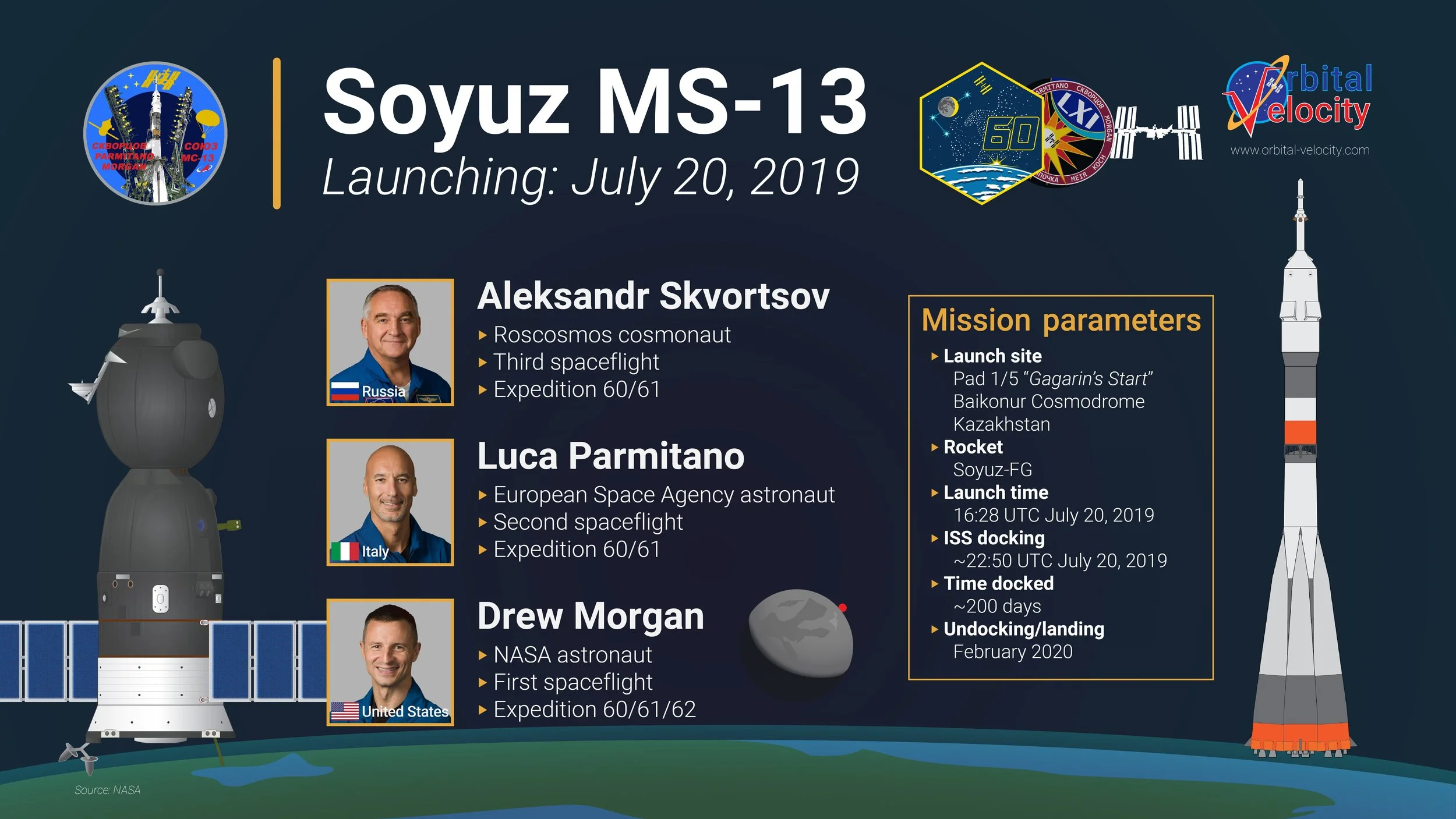Soyuz MS-13 launches to ISS on Moon landing anniversary
/As the world celebrated the 50th anniversary of the Apollo 11 lunar landing, three people left Earth to join the International Space Station’s Expedition 60 crew.
Launching in their Soyuz MS-13 spacecraft, Russian cosmonaut Aleksandr Skvortsov, NASA astronaut Drew Morgan and European Space Agency astronaut Luca Parmitano raced toward the outpost to dock just four orbits later.
Liftoff atop a Soyuz-FG rocket took place at 16:28 UTC July 20, 2019, from Baikonur Cosmodrome. After reaching orbit some nine minutes later, the spacecraft began a process to catch up with the ISS over the course of about six hours.
Docking with the aft port of the Zvezda service module took place at 22:48 UTC while the spacecraft were flying some 400 kilometers over southern Russia just northeast of the Black Sea, according to NASA.
It took about two hours for the incoming crew to pressurize the space between the hatches of the ISS and Soyuz and perform leak checks. The official opening time was at 01:04 UTC July 21.
The incoming space flyers were welcomed by Russian cosmonaut and station commander Aleksey Ovchinin, and NASA astronauts Nick Hague and Christina Koch, bringing Expedition 60 to its full six-person crew size.
According to NASA, the three new crew members, who will transition to Expedition 61 in October, are expected to perform some 250 science investigations in biology, Earth science, human research, technology development and more.
Their first big task, however, will start just a week or so later when SpaceX launches the CRS-18 Dragon capsule toward the outpost. Among its thousands of kilograms of supplies and hardware is International Docking Adapter-3, which is slated to be attached to Pressurized Mating Adapter-3 on the space-facing side of the Harmony module later in August.
The attachment process will require at least one spacewalk, slated to be performed by Hague and Morgan.
Once IDA-3 is attached, it will allow for two commercial crew vehicles to be docked at the same time, allowing for direct handovers of U.S.-based crew launches as early as next year.
Of note, Morgan is expected to remain aboard the ISS a little longer than his Soyuz MS-13 crew mates. Should the schedule remain the same, Morgan will return to Earth with the crew of Soyuz MS-15 in April 2020.
Soyuz MS-15 is launching with two ISS crew members and a single short-term visitor from the United Arab Emirates -- Hazza Al Mansouri.
Following a late-September launch, Al Mansouri will return to Earth in early October with the crew of Soyuz MS-12, taking the seat of Koch, who will remain aboard the ISS until February 2020 and take the seat of Morgan in Soyuz MS-13 when it returns.
Expedition 60 is slated to officially end when Ovchinin and Hague return to Earth with Al Mansouri in Soyuz MS-12 on Oct. 3. Upon undocking, Expedition 61 will begin with Parmitano serving as the first Italian International Space Station commander.






